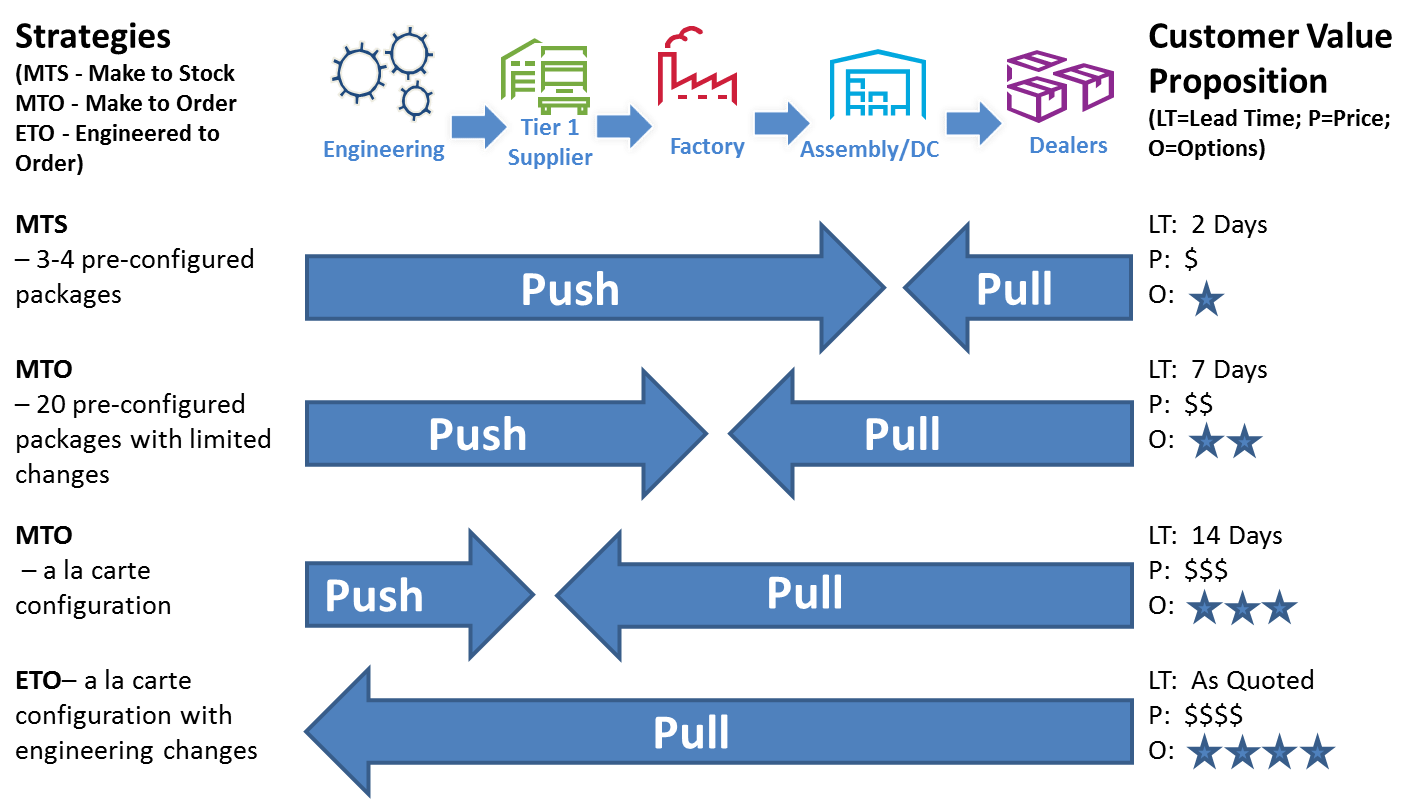Building The Good Life: Practical Steps For Fulfillment

Table of Contents
Defining Your Values and Goals
Before embarking on the journey of building the good life, it's crucial to understand what truly matters to you. This involves identifying your core values and setting meaningful goals aligned with them.
Identifying Core Values
Understanding your core values – the principles that guide your decisions and actions – is fundamental to creating a fulfilling life. These values might include family, creativity, learning, freedom, health, or contribution to society. A strong understanding of your core values provides a compass, guiding your choices and ensuring your actions align with your deepest beliefs.
- Journaling: Spend time reflecting on moments of joy, satisfaction, and pride. What values were present in those experiences?
- Self-Reflection: Ask yourself: What qualities do I admire in others? What kind of impact do I want to have on the world? What truly brings me happiness?
- Values Clarification Exercises: Numerous online resources and worksheets offer guided exercises to help you identify and prioritize your core values. A core values assessment can provide a clear picture of what truly matters to you. This personal values inventory will be your guiding light.
Setting Meaningful Goals
Once you've identified your core values, it's time to set meaningful goals that reflect them. Using the SMART framework – Specific, Measurable, Achievable, Relevant, and Time-bound – ensures your goals are actionable and trackable.
- Career Goals: If your value is professional fulfillment, a SMART goal might be: "Obtain a promotion to Senior Marketing Manager by December 2024 by completing three relevant online courses and exceeding performance expectations in my current role."
- Relationship Goals: If your value is strong relationships, a SMART goal could be: "Have a family dinner once a week to foster stronger family bonds."
- Health Goals: If your value is physical well-being, a SMART goal could be: "Run a 5k race in six months by training three times a week and following a healthy diet plan."
- Personal Growth Goals: If your value is continuous learning, a SMART goal could be: "Learn Spanish to conversational fluency by taking an online course and practicing with a tutor twice a week for one year."
Cultivating Positive Relationships
Strong relationships are a cornerstone of a good life. Nurturing existing connections and building new ones enriches our lives and provides support during challenging times.
Nurturing Existing Relationships
Investing time and effort in existing relationships strengthens bonds and fosters a sense of belonging.
- Regular Communication: Make time for regular phone calls, video chats, or in-person visits with loved ones.
- Quality Time: Schedule dedicated time for meaningful interactions, free from distractions.
- Active Listening: Truly listen and engage when interacting with others, showing genuine interest and understanding. Building strong relationships requires effort and commitment.
Building New Connections
Expanding your social circle brings new perspectives, opportunities, and support systems.
- Join Clubs or Groups: Find groups aligned with your interests, whether it's a book club, hiking group, or volunteer organization.
- Volunteer: Contributing to a cause you care about can be incredibly rewarding and connect you with like-minded individuals.
- Attend Social Events: Step outside your comfort zone and attend social gatherings, networking events, or workshops.
- Online Networking: Utilize online platforms to connect with people who share your interests or professional goals. Building new connections enriches life and expands opportunities.
Prioritizing Self-Care and Well-being
Taking care of your physical and mental well-being is essential for building a good life. Neglecting self-care diminishes your ability to enjoy life's experiences fully.
Physical Well-being
Prioritizing your physical health lays the foundation for overall well-being.
- Regular Exercise: Incorporate physical activity into your daily routine, even if it's just a short walk.
- Healthy Eating: Focus on a balanced diet rich in fruits, vegetables, and whole grains.
- Sufficient Sleep: Aim for 7-9 hours of quality sleep each night. Healthy lifestyle choices contribute to overall well-being.
Mental and Emotional Well-being
Nurturing your mental and emotional health is just as important as physical health.
- Mindfulness Practices: Incorporate mindfulness techniques such as meditation, yoga, or deep breathing exercises into your daily routine. Mindfulness practices improve mental well-being.
- Stress Management Techniques: Develop healthy coping mechanisms for managing stress, such as exercise, spending time in nature, or engaging in hobbies. Stress management techniques are essential for emotional health.
- Seek Professional Help: Don't hesitate to reach out to a therapist or counselor if you're struggling with mental health challenges.
Embracing Continuous Learning and Growth
Lifelong learning and personal development are essential for a fulfilling life. Continuously expanding your knowledge and skills keeps you engaged, adaptable, and open to new possibilities.
Expanding Knowledge and Skills
Learning never stops. Embrace opportunities to acquire new knowledge and skills.
- Online Courses: Utilize online platforms like Coursera, edX, and Udemy to learn new skills or deepen your knowledge in existing areas.
- Workshops and Seminars: Attend workshops and seminars to gain practical skills and connect with others in your field.
- Books and Podcasts: Expand your knowledge and perspectives through reading and listening to educational content.
- Mentorship Programs: Seek out mentors who can provide guidance and support in your personal or professional development. Skill development is key to personal growth.
Stepping Outside Your Comfort Zone
Embracing challenges and pushing your boundaries fosters personal growth and resilience.
- Try Something New: Take a class, join a club, or travel to a new place.
- Volunteer for a Challenging Role: Stepping outside your comfort zone builds confidence and resilience.
- Embrace Failure as a Learning Opportunity: Don't be afraid to fail; see setbacks as opportunities for growth. Personal development involves pushing your limits.
Conclusion
Building the good life is a continuous journey, not a destination. By defining your values, setting meaningful goals, cultivating strong relationships, prioritizing self-care, and embracing continuous learning, you can create a life filled with purpose, joy, and fulfillment. Start building the good life today by identifying your core values and setting meaningful goals. Remember, designing your good life, creating a good life, and achieving the good life is a process that requires dedication and self-awareness. Embrace the journey and enjoy the process of crafting a life that truly resonates with you.

Featured Posts
-
 Cycle News Magazine 2025 Issue 12 A Comprehensive Overview
May 31, 2025
Cycle News Magazine 2025 Issue 12 A Comprehensive Overview
May 31, 2025 -
 The Los Angeles Wildfire Betting Market A Growing Concern
May 31, 2025
The Los Angeles Wildfire Betting Market A Growing Concern
May 31, 2025 -
 Le Combat Environnemental Selon Isabelle Autissier L Importance De L Unite
May 31, 2025
Le Combat Environnemental Selon Isabelle Autissier L Importance De L Unite
May 31, 2025 -
 Banksy Artworks Make Debut In Dubai A World News Exclusive
May 31, 2025
Banksy Artworks Make Debut In Dubai A World News Exclusive
May 31, 2025 -
 Ais Learning Process Why Responsible Development Is Crucial
May 31, 2025
Ais Learning Process Why Responsible Development Is Crucial
May 31, 2025
